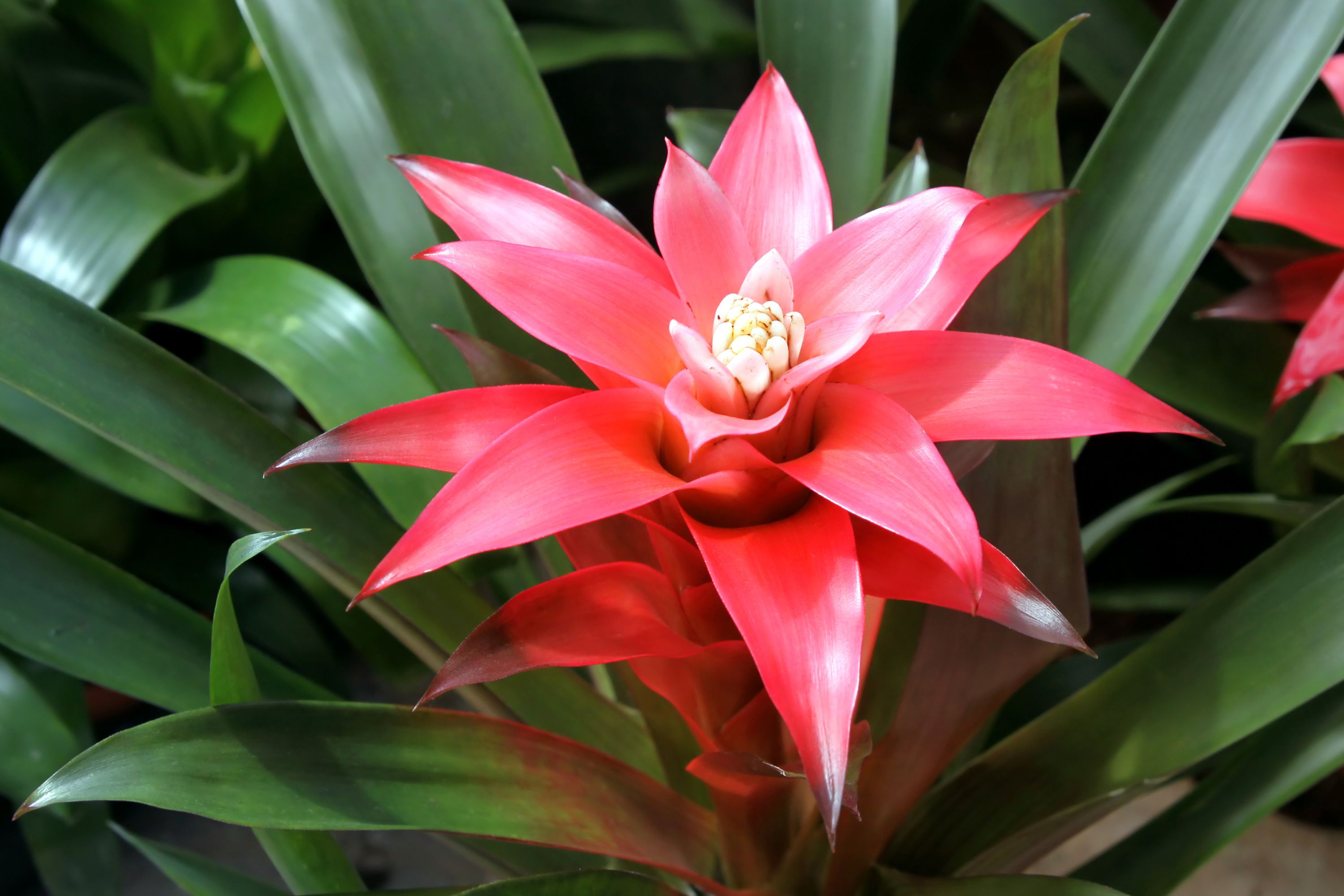Scarlet star
(Guzmania lingulata)

Description
Guzmania lingulata is a popular species of flowering plant that belongs to the Bromeliaceae family. This plant is native to the rainforests of Central and South America, where it grows as an epiphyte on trees and rocks. It is widely cultivated as an ornamental plant for its striking foliage and brightly colored flower bracts. Taxonomy: Guzmania lingulata is part of the genus Guzmania, which is a diverse group of plants that includes more than 150 species. The genus is named after Anastasio Guzman, a Spanish pharmacist who was interested in botany. The species name "lingulata" comes from the Latin word "lingula," which means "little tongue," in reference to the shape of the plant's leaves. Physical Description: Guzmania lingulata is a small plant that typically reaches a height of 1 to 2 feet (30 to 60 cm) and a width of 1 to 2 feet (30 to 60 cm). It has a rosette of long, narrow leaves that are arranged in a spiral fashion. The leaves are bright green in color and have smooth margins. They can grow up to 18 inches (45 cm) in length and 1 inch (2.5 cm) in width. The flowers of Guzmania lingulata are borne on a spike-like inflorescence that rises above the foliage. The inflorescence is composed of brightly colored bracts that surround small, inconspicuous flowers. The bracts can be red, orange, yellow, or pink in color, depending on the cultivar. The flowers themselves are white or yellow and are not particularly showy. Cultivation: Guzmania lingulata is a relatively easy plant to grow and care for, making it a popular choice for indoor and outdoor gardens. It prefers bright, indirect light and well-draining soil that is kept consistently moist. It is important to avoid overwatering or allowing the soil to become waterlogged, as this can lead to root rot. The plant can be propagated by division, which involves separating the offsets that form at the base of the parent plant. These offsets can be potted up and grown into mature plants over time. Guzmania lingulata is not particularly susceptible to pests or diseases, but it can be affected by mealybugs or scale insects. These pests can be treated with insecticidal soap or neem oil. Uses: Guzmania lingulata is primarily grown as an ornamental plant for its striking foliage and colorful flowers. It is often used in indoor or outdoor gardens, as well as in landscaping projects. It can be grown in containers or planted directly in the ground, depending on the desired effect. In addition to its aesthetic value, Guzmania lingulata is also known for its air-purifying properties. Like other bromeliads, it is capable of absorbing harmful chemicals from the air and converting them into harmless compounds. This makes it an ideal plant for use in homes or offices, where it can help improve indoor air quality. Conclusion: Guzmania lingulata is a beautiful and versatile plant that is widely grown for its foliage and flowers. With proper care and cultivation, it can thrive in a variety of settings and provide many years of enjoyment for plant enthusiasts. Whether grown indoors or outdoors, this plant is sure to add a touch of tropical beauty to any space.
Taxonomic tree:







